NSC2500: Amoxicillin for Pneumonia - Mechanism, and Relevance
VerifiedAdded on 2023/06/12
|13
|1025
|304
Presentation
AI Summary
This presentation provides an overview of bacterial pneumonia and the use of amoxicillin in its treatment. It defines bacterial pneumonia as a common lung infection where the air sacs become inflamed, identifying Streptococcus pneumoniae and Haemophilus influenzae as key causative microorganisms. The presentation details the pathophysiology of the infection, including the invasion of alveoli, triggering of the immune response, and the resulting symptoms such as fever and fatigue. It explains amoxicillin's mechanism of action as a β-lactam antibiotic that inhibits bacterial cell wall formation, leading to cell lysis. Furthermore, the presentation covers the pharmacokinetics of amoxicillin, including its absorption, distribution, excretion, and potential drug interactions. It also discusses the various routes of administration, potential side effects, precautions, and relevance to nursing practice, emphasizing its importance in primary and secondary healthcare services, cost reduction, and prevention of community-acquired infections. The presentation concludes by highlighting the effectiveness of amoxicillin in treating bacterial pneumonia and its significance in improving patient outcomes.
1 out of 13
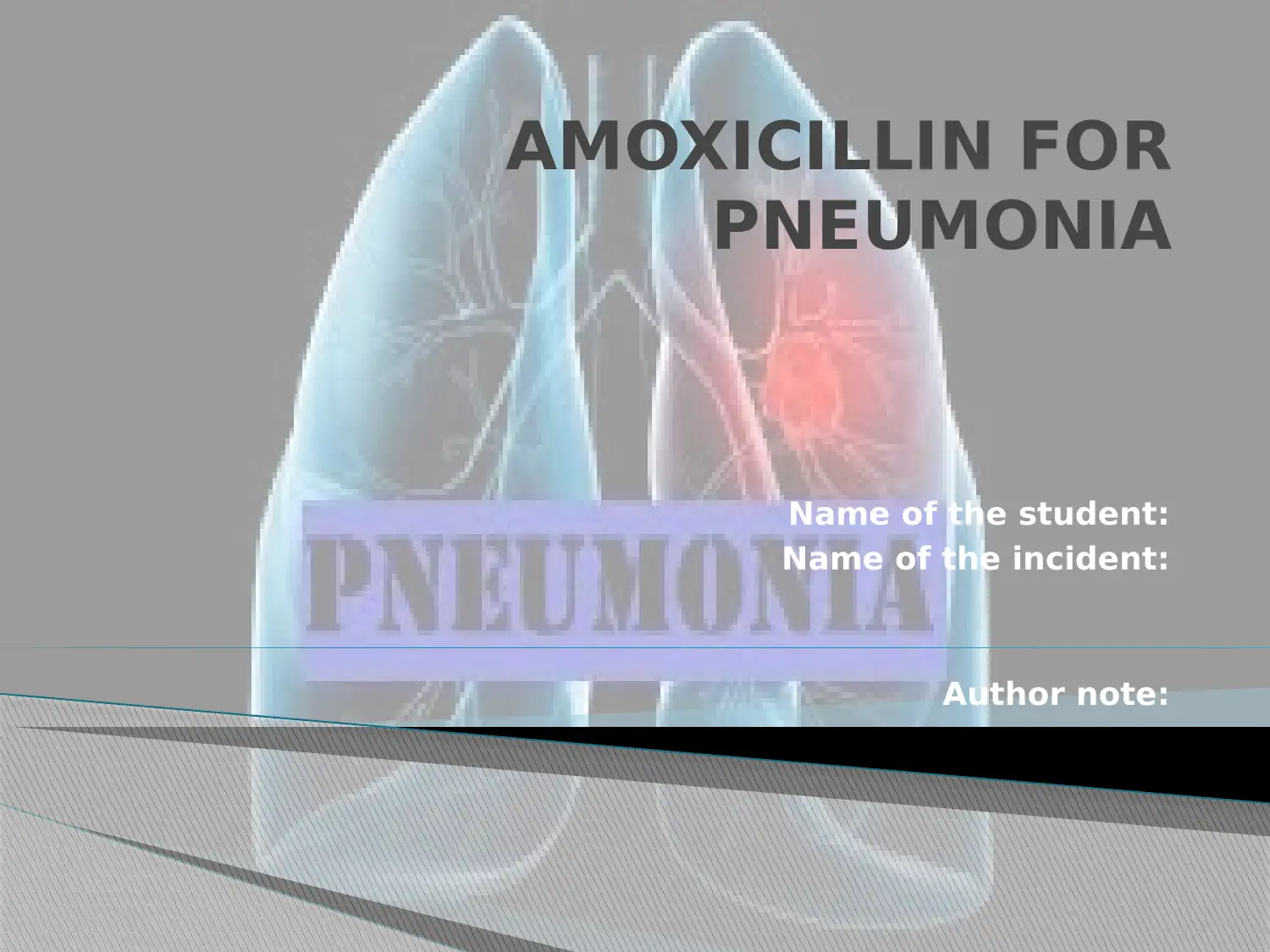
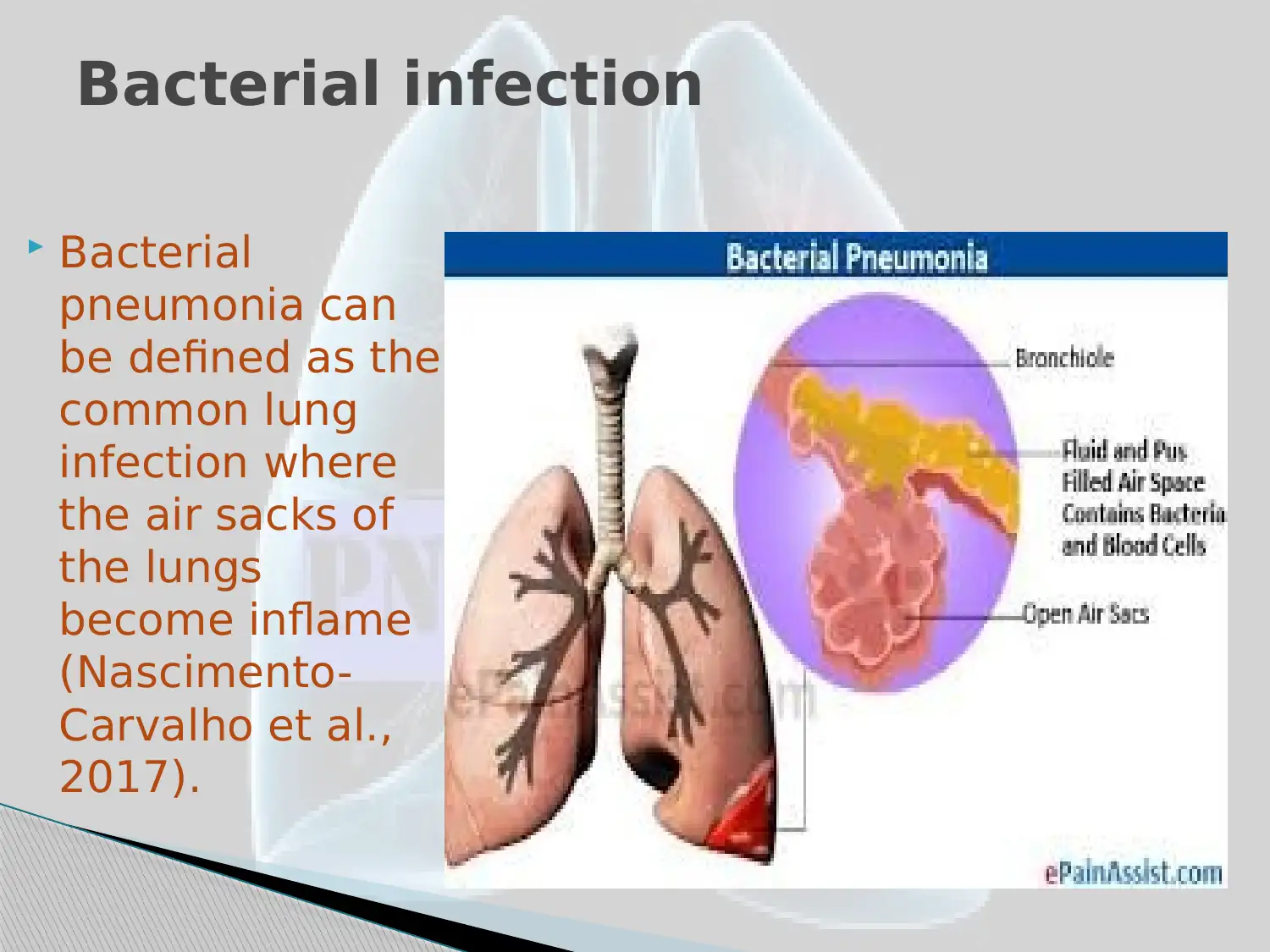
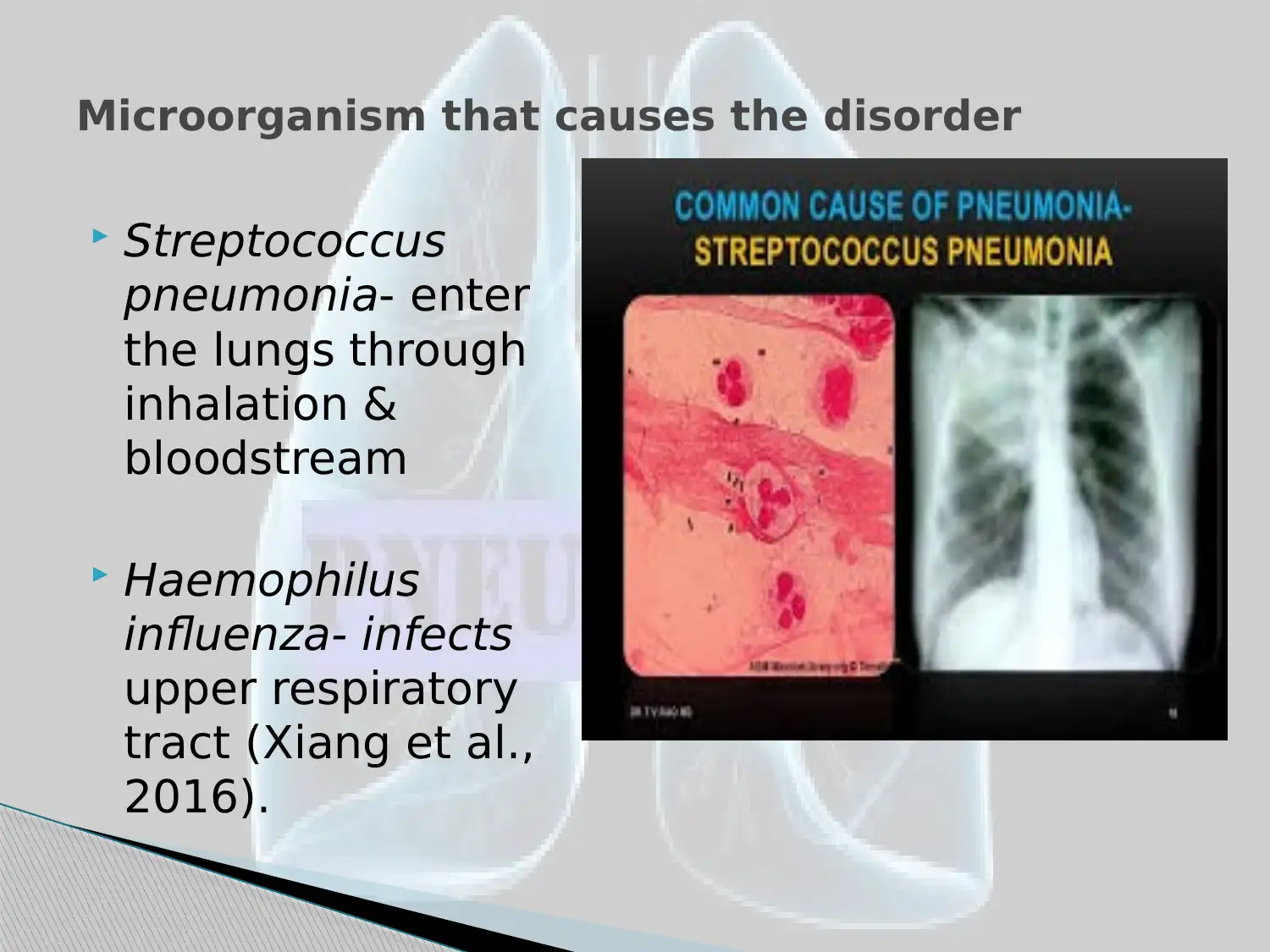

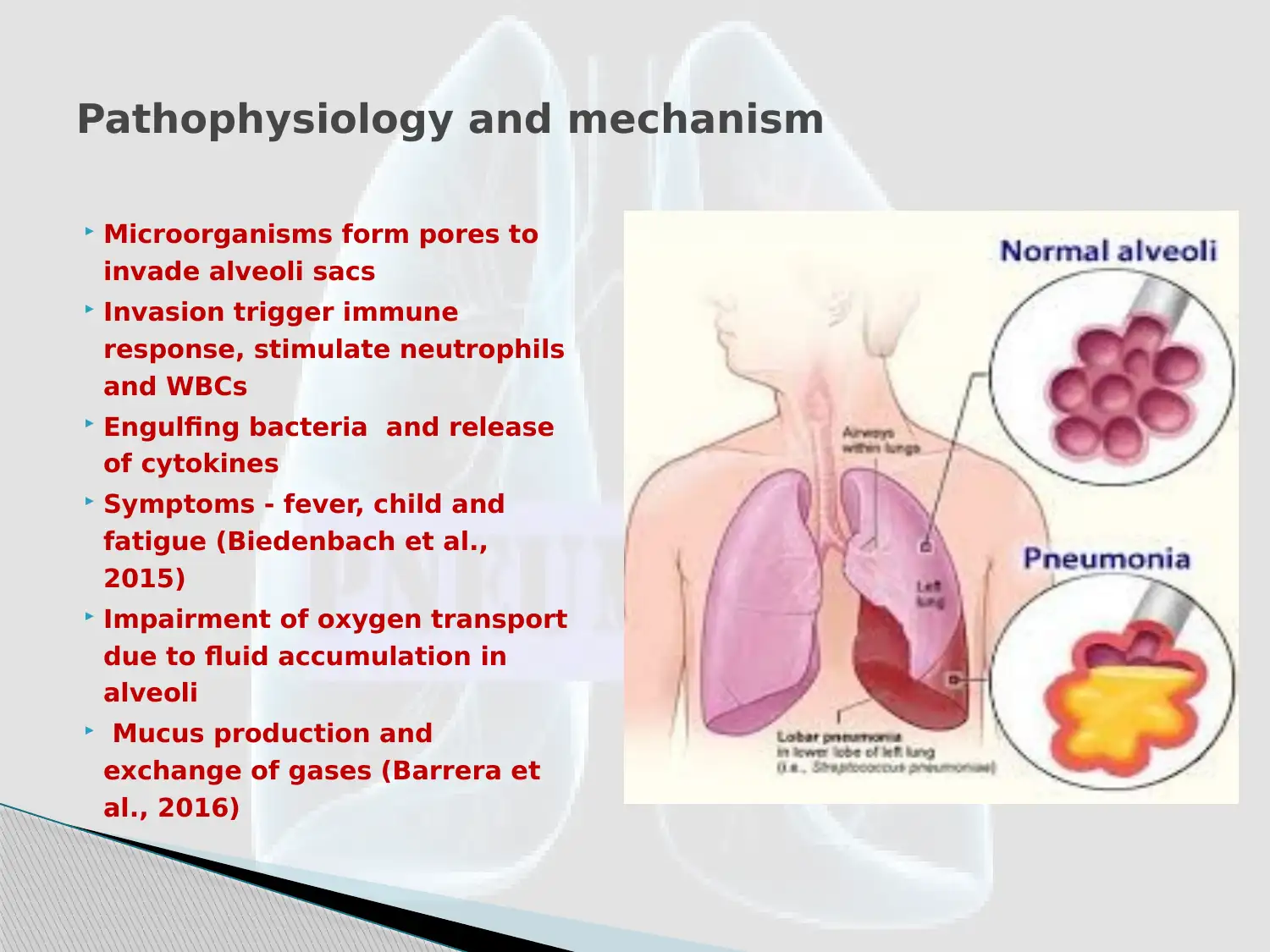
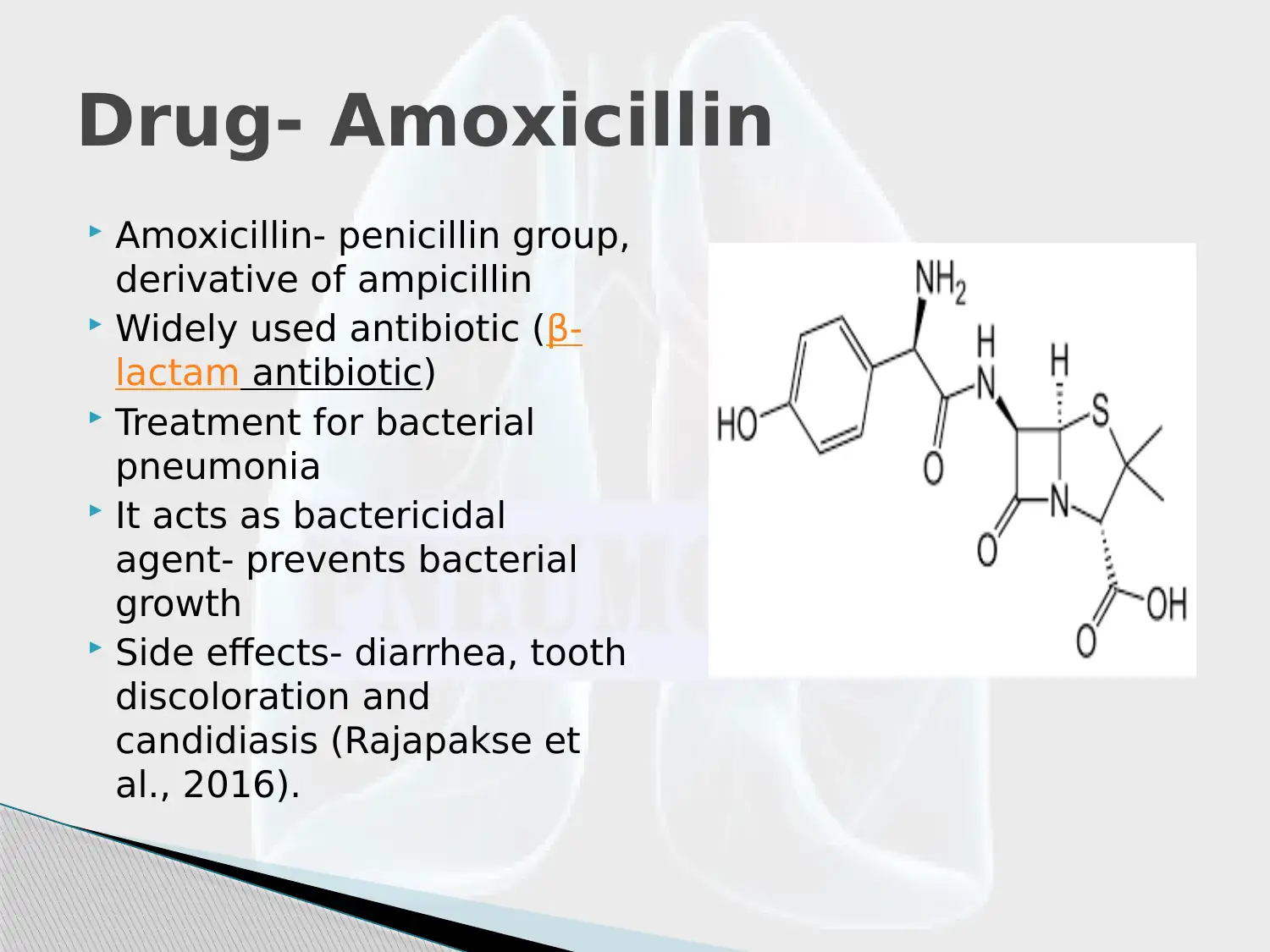
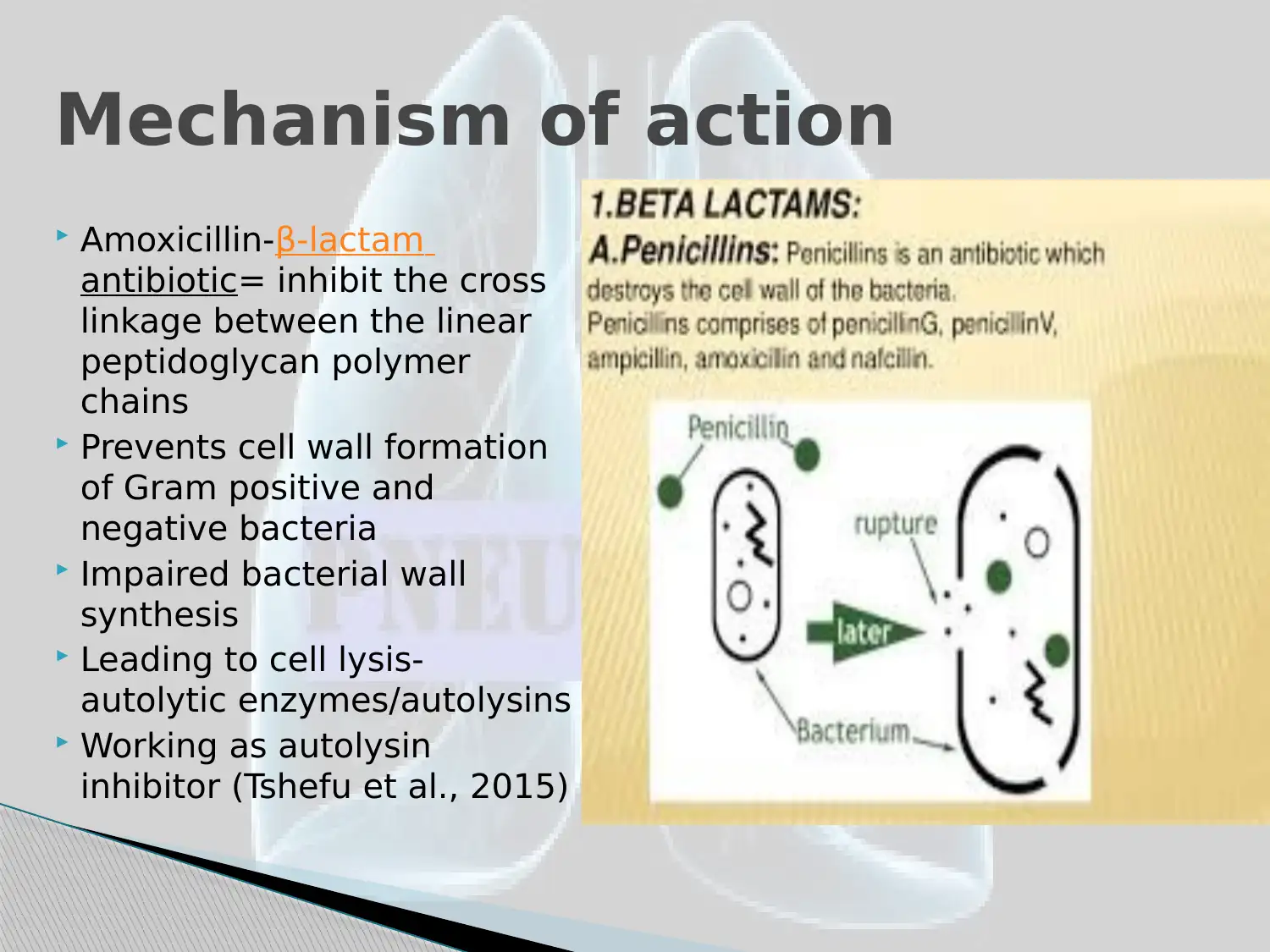
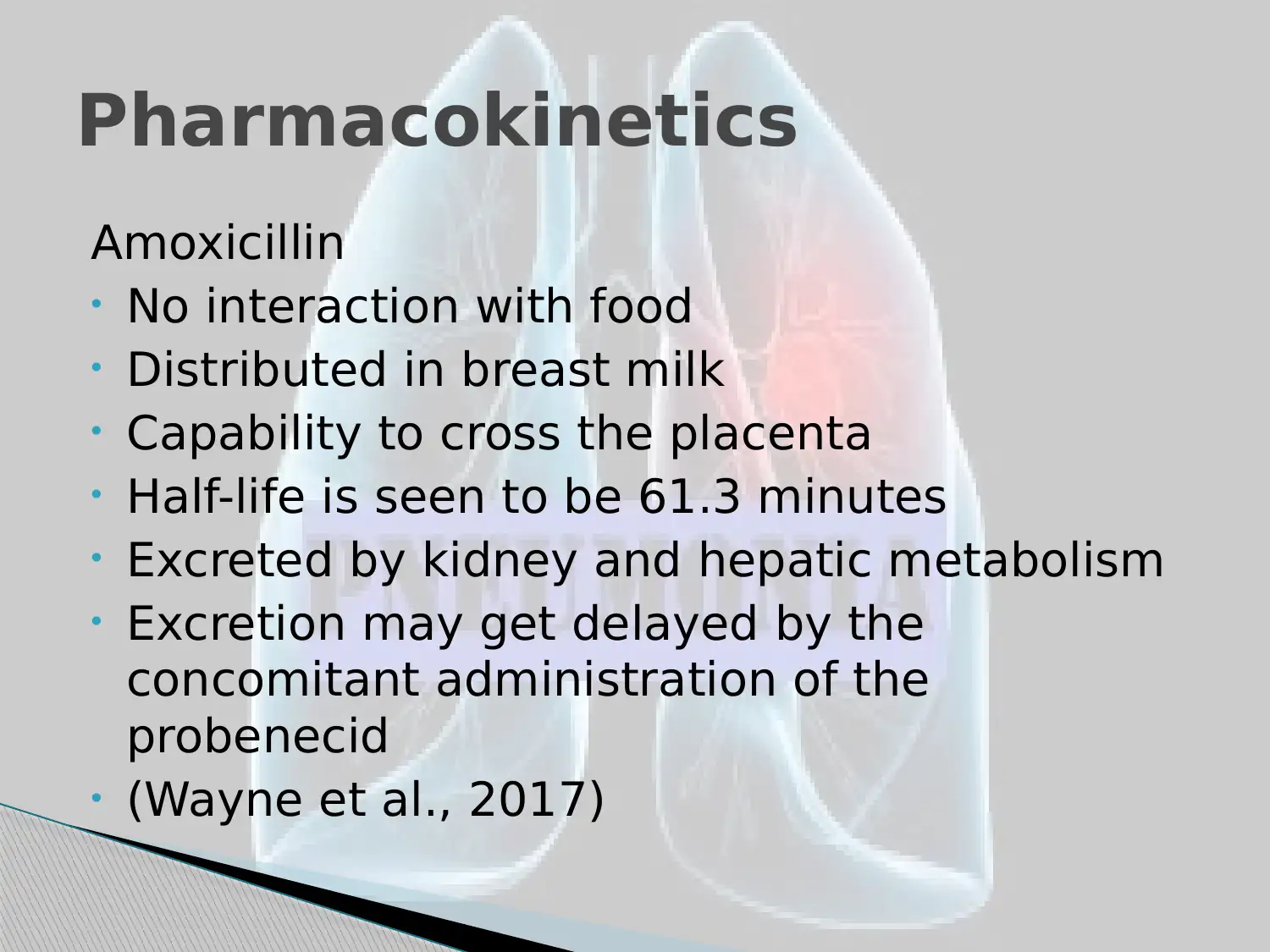
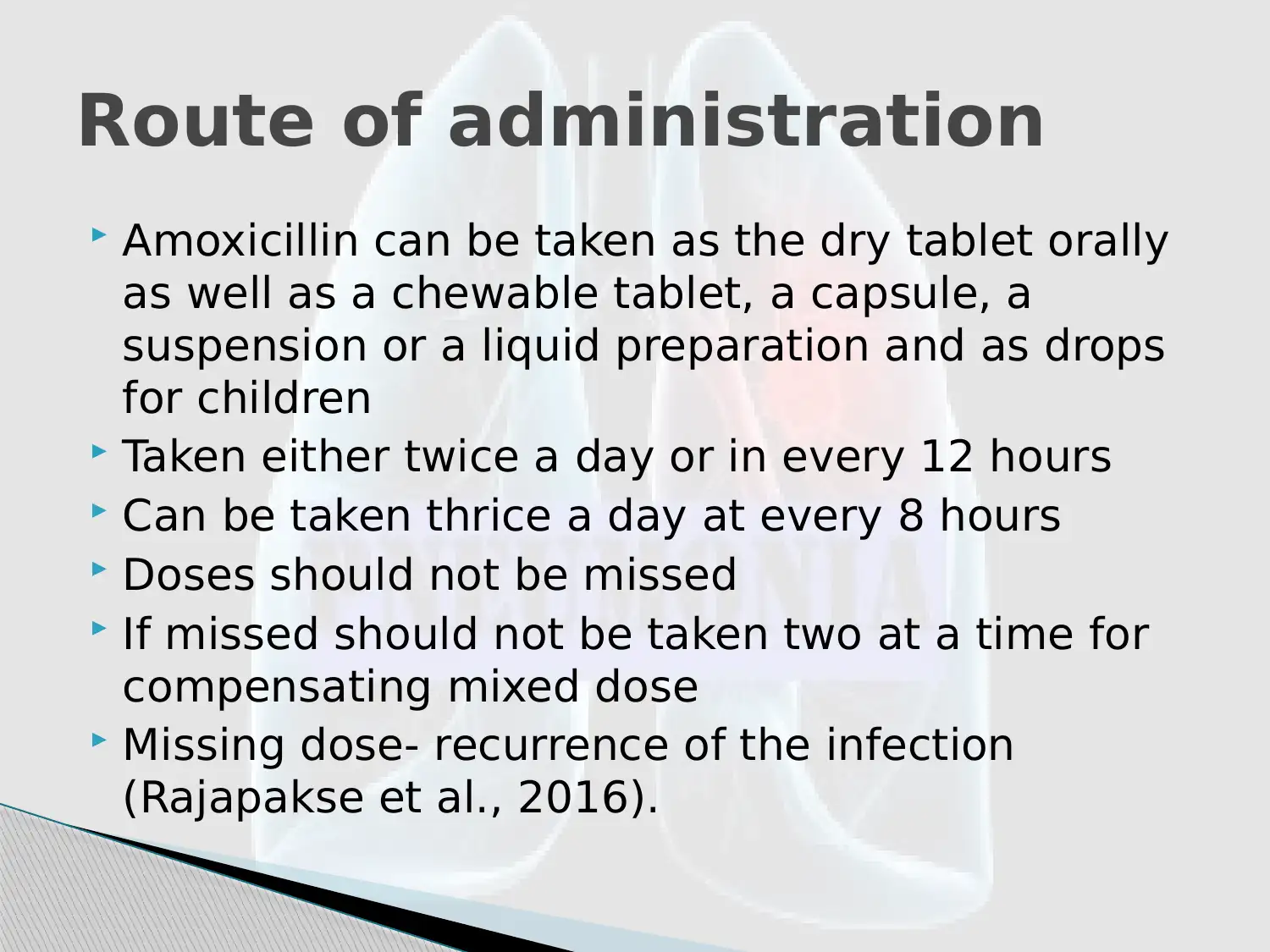
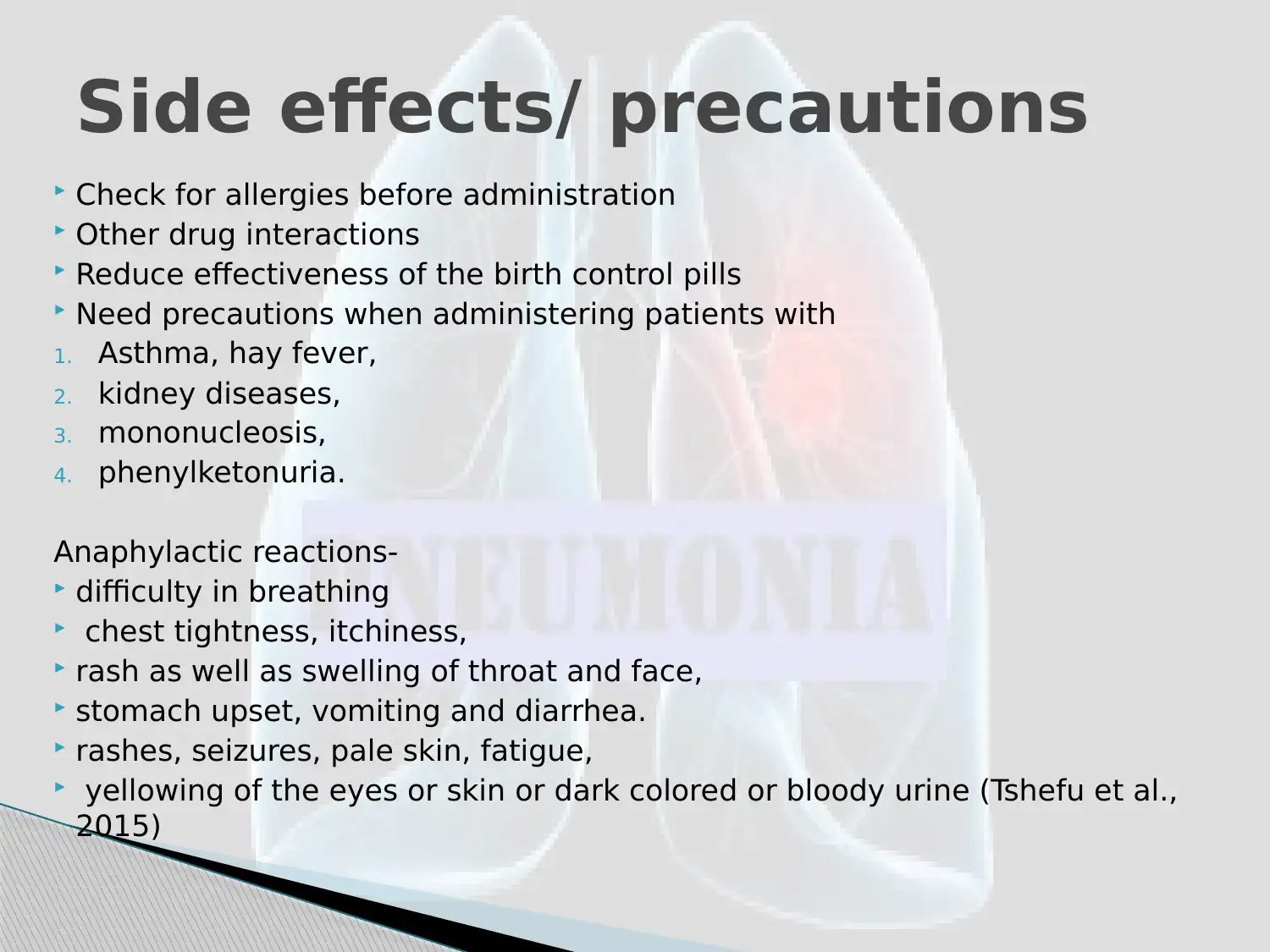
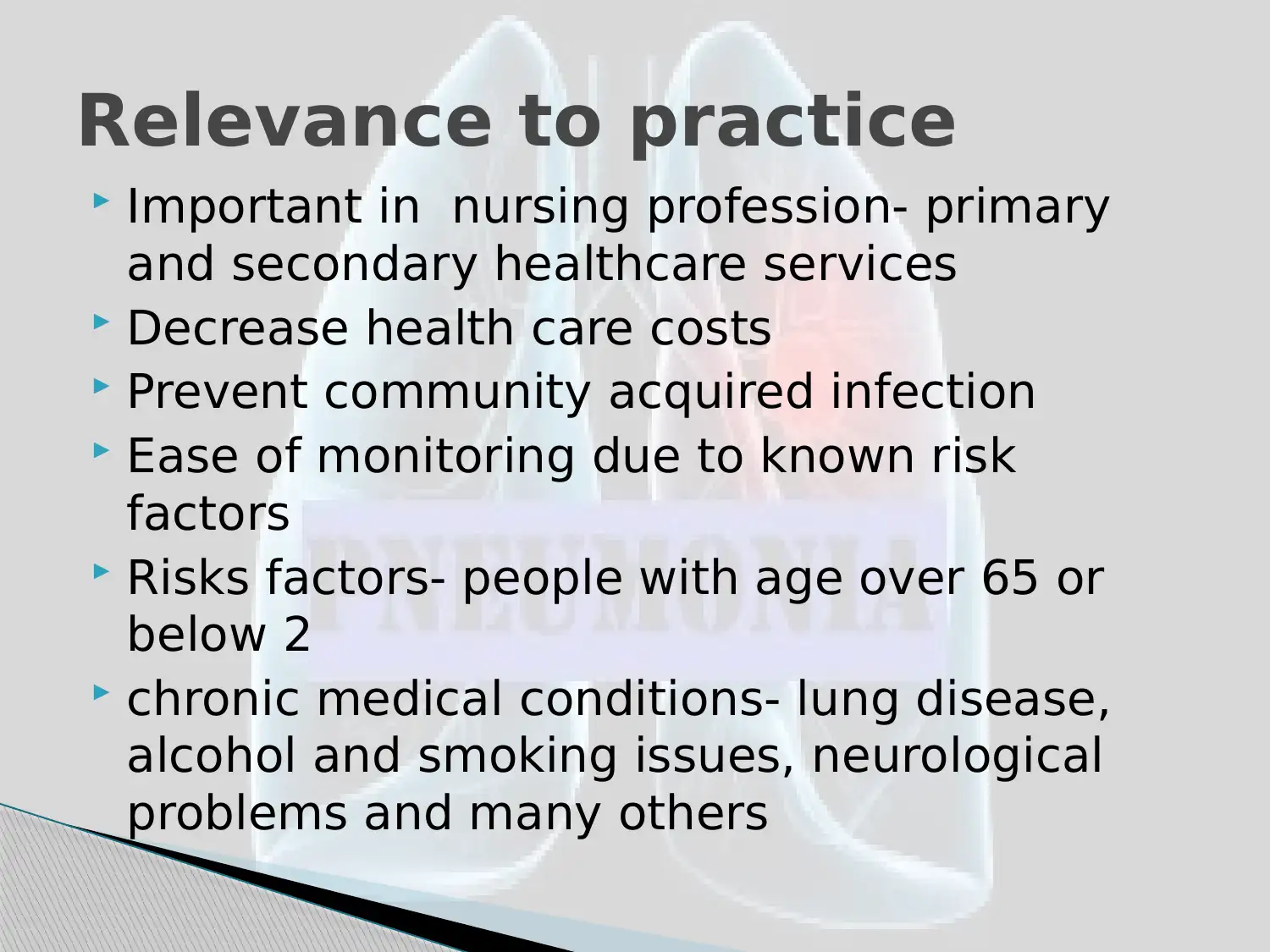

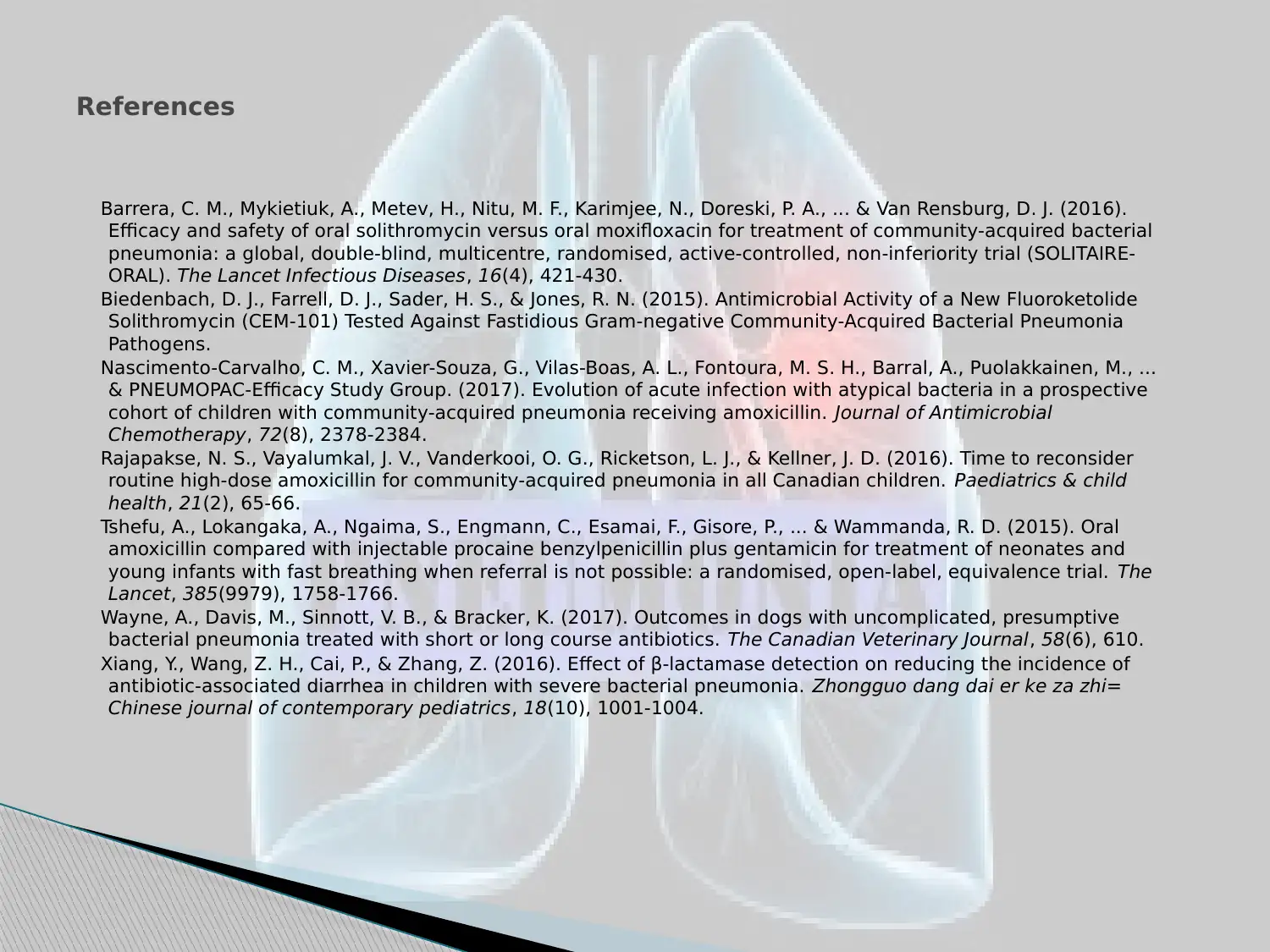




![[object Object]](/_next/static/media/star-bottom.7253800d.svg)